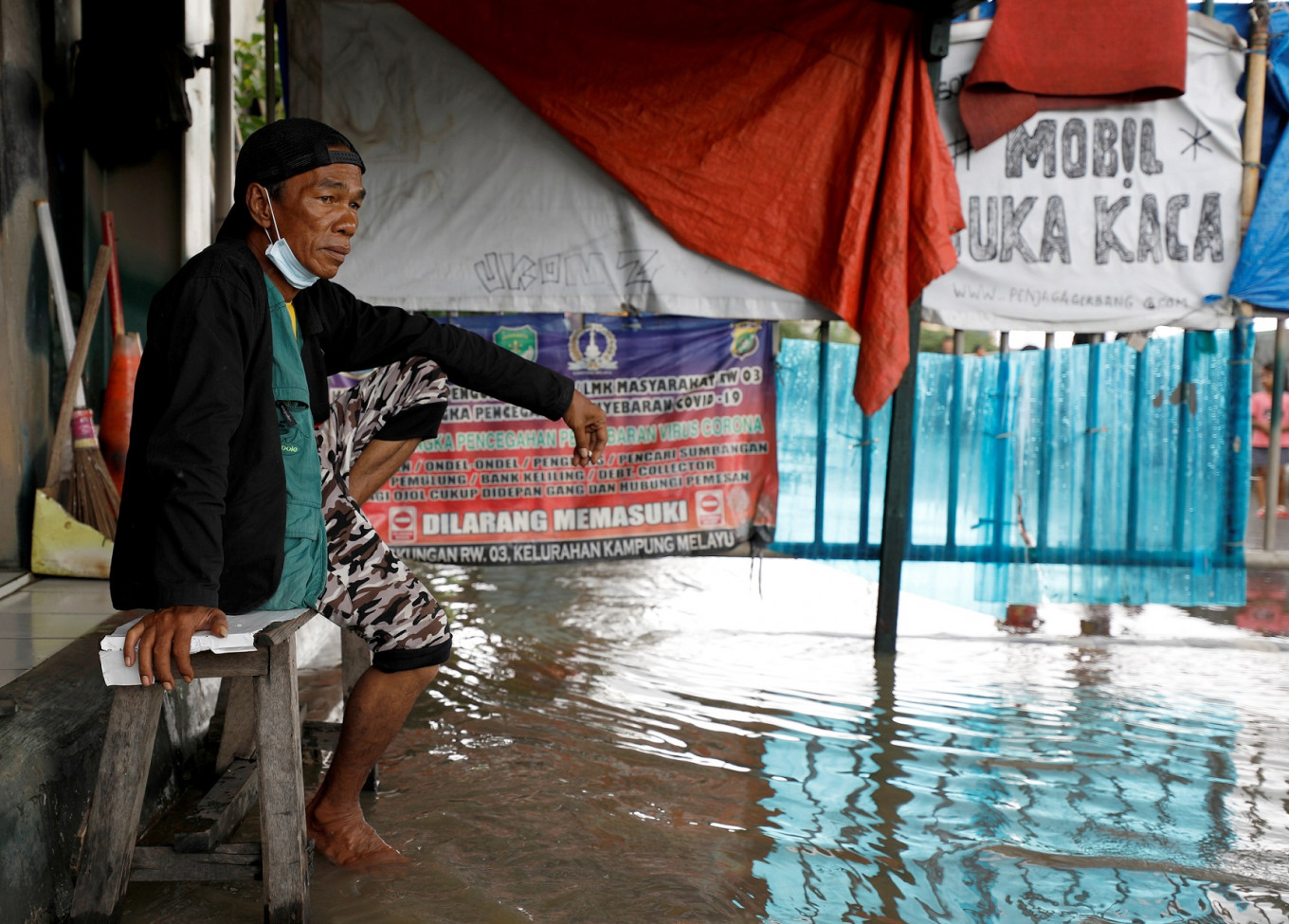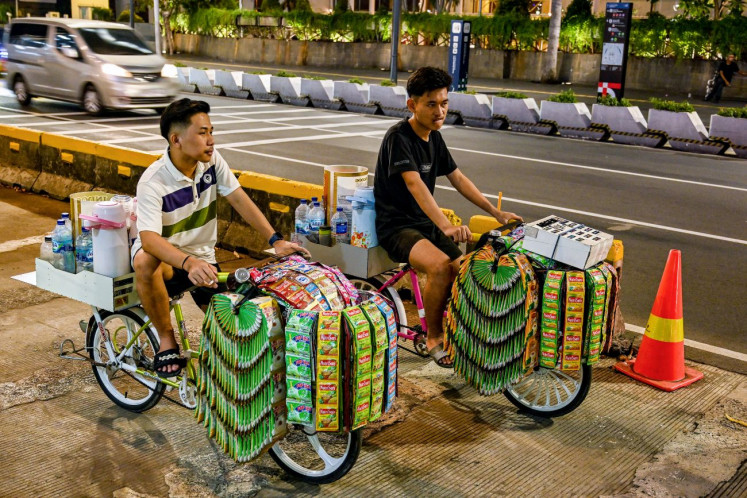Popular Reads
Top Results
Can't find what you're looking for?
View all search resultsPopular Reads
Top Results
Can't find what you're looking for?
View all search resultsLiving with La Niña
The BMKG has specifically named Java, Bali and Nusa Tenggara, the southern part of Sumatra, South Sulawesi and South Kalimantan as the areas vulnerable to hydro-meteorological disasters resulting from the weather abnormality.
Change text size
Gift Premium Articles
to Anyone
W
e may end up walking in the cold November rain, as Guns N’ Roses describes in its legendary song, and as such be reminded of a changing weather pattern that we did not see happening 10 or 20 years ago. In fact, the Meteorology, Climatology, and Geophysics Agency (BMKG) has confirmed that the weather anomaly La Niña is returning and will last until February next year.
For the second year in a row we will be experiencing La Niña, “little girl” in Spanish, a meteorological phenomenon where surface water temperatures in the equatorial band of the Pacific Ocean become abnormally low. The consequences may be devastating, even fatal, if we recall how this anomalous weather caused floods, landslides, whirlwinds that displaced thousands of people and damaged buildings early this year.
In Jakarta alone, more than 1,300 people from 20 neighborhood units had to take shelter when floods submerged their homes in February of this year, as La Niña peaked.
BMKG head Dwikorita Karnawati has warned that La Niña is expected to strengthen this month and in December before subsiding to a moderate level by the end of this year into February next year. While in other parts of the world the anomaly will manifest in harsh winters, in Indonesia it will increase rain intensity by 20-70 percent above normal levels.
The BMKG has specifically named Java, Bali and Nusa Tenggara, the southern part of Sumatra, South Sulawesi and South Kalimantan as the areas vulnerable to hydro-meteorological disasters resulting from the weather abnormality.
The National Disaster Mitigation Agency (BNPB) recorded a total of 372 disasters in January of this year, mostly related to La Niña, claiming 216 lives and injuring more than 12,000 others. Monthly rainfalls increased by up to 70 percent at that time.
The BNPB says it has taken precautionary measures through its regional offices particularly in areas classified as highly prone to floods and landslides. Such efforts may save many lives, but how long can community preparedness and resilience last if disasters strike every year?
La Niña and its opposite phenomenon El Niño – which has triggered forest fires – have frequent and calamitous impacts on Indonesia and many parts of the world. They have simply proved climate change is real. But on the other hand they show the high price we have to pay for our greed: extreme weather and all its repercussions are the result, rather than the cause, of human suffering.
Our awareness of the need to protect the earth has come just too late to control the damage we have caused through our penchant for exploitation and extraction of natural resources in the name of prosperity.
Prior to their arrival in Glasgow, Scotland, for the COP26 climate conference, world leaders talked in length about their commitment to saving the planet from nightmarish environmental destruction that may lead the human race to extinction, as has happened to several species but what is more important is how nations realize their pledges.
We may have to live with La Niña and El Niño for an unforeseeable period even if we manage to reach net-zero emissions. What we can do is not to exacerbate the degradation – and enjoy the cold November rain.










